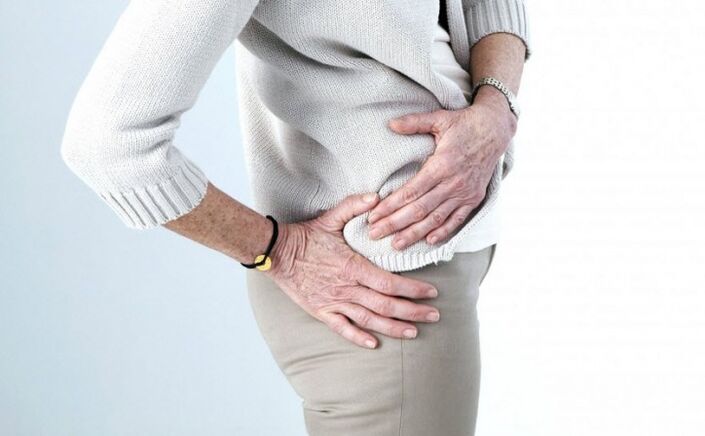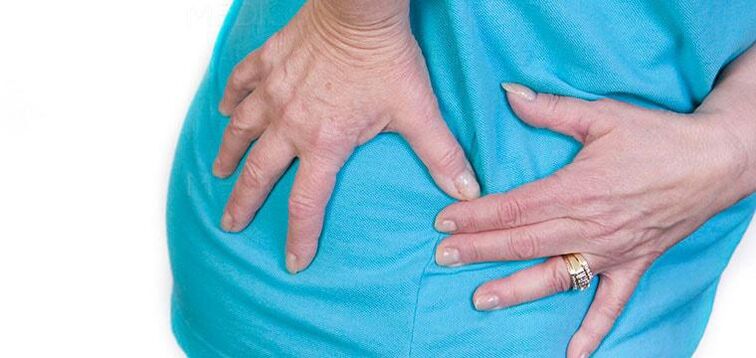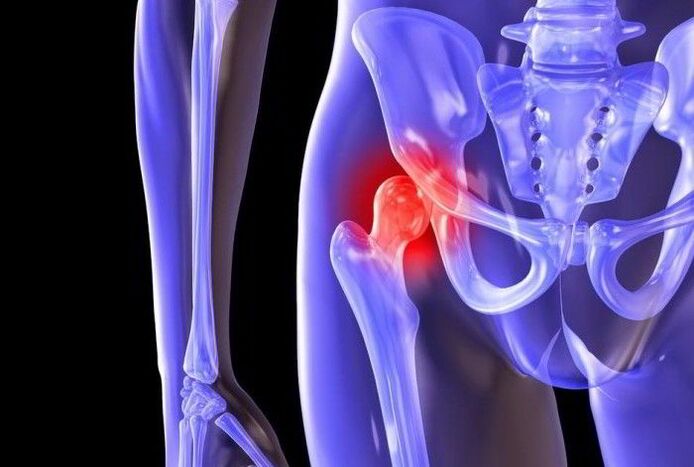Coxarthrosis of the hip joint is a complex process of a degenerative-dystrophic nature.The disease has a fairly broad clinical picture and occurs primarily in people over 40 years of age, but can also be diagnosed at younger ages, especially in children and adolescents.

Precursors to the development of coxarthrosis of the hip joint are often various types of trauma and inflammation, the treatment of which was missing or inadequate.
There are several degrees of development of degenerative-dystrophic processes, each of which requires a specific direction of complex therapeutic treatment methods.
What is coxarthrosis of the hip joint?
Coxarthrosis or osteoarthrosis/deforming osteoarthritis of the hip joint is a complex pathological disease of the largest joint in the human body, which is accompanied by the progressive destruction of the osteochondral tissue.The development process is gradual.
Delayed diagnosis, as well as the lack of adequate treatment, leads to deformation of the adjacent bone surfaces and the appearance of bone growths on them, which limits mobility and disrupts normal human life.
Statistics show that a disease of this type occurs in 12% of cases in which pathology of the musculoskeletal system is diagnosed.
Causes of coxarthrosis
Today it is customary to distinguish two types of coxarthrosis of the hip joint:
- primary, the occurrence of which is inexplicable;
- secondary, developing against the background of other existing diseases.
With primary coxarthrosis, concomitant diseases of the musculoskeletal system are often observed, which include osteochondrosis of various parts of the spine.
The most likely reasons include the following:
- Pathologies of the development of the musculoskeletal system (dysplasia);
- aseptic necrosis of joint tissue;
- infectious lesion;
- inflammatory and infectious diseases;
- Injuries.
Risk factors
Factors that increase the risk of coxarthrosis of the hip joint usually include:
- systematically increased loads;
- poor blood circulation in joint tissues;
- hormonal changes;
- metabolic disorders;
- natural aging;
- insufficiently active lifestyle.
It should be noted that coxarthrosis itself cannot be inherited;accordingly, people with such a diagnosis have no genetic predisposition to it;However, the manifestation of a hereditary factor can be observed as other features of the body's function that provoke the development of pathology.The characteristics of this type include metabolic disorders, the special structure of the musculoskeletal system and weakness of the joint tissue.
Degrees of coxarthrosis
Degenerative-dystrophic diseases, like any other pathology, have stages of development.In coxarthrosis there are only three of them, each of which is characterized by the presence of certain changes.
Coxarthrosis of the 1st degree
In grade 1 coxarthrosis, there is a relatively moderate reduction in the joint space, accompanied by growth of bone tissue over the entire joint surface.
There are no pathological changes on the surfaces of the femur.
Second degree coxarthrosis
With coxarthrosis of the 2nd degree, the gap between the articular bones is significantly reduced, which is more than 50% less than the generally accepted indicator.Pathological processes lead to displacement of the femur, which is accompanied by deformation of its head, which significantly increases in size and is covered with numerous irregularities along the contour.
At this stage of development, bone growths occur on all surfaces of the acetabulum, not just the cartilage.
Coxarthrosis grade 3
Coxarthrosis of the 3rd degree is characterized by a sharp deviation in functional indicators, as well as a sharp reduction in the gap between the articular bones.In addition, there is a pronounced expansion of the femoral head and numerous bone growths.
Symptoms of coxarthrosis
The main, constant symptom of the disease is pain of varying intensity.The detailed symptom picture is determined by the intensity of the development of pathological processes.

With 1st degree coxarthrosis, the following symptoms occur:
- systematically occurring pain caused by physical activity of varying intensity;
- Localization of unpleasant and painful sensations in the hip/knee area.
Second degree coxarthrosis is manifested by the following symptoms:
- moderate pain intensity, often manifested at rest;
- Spread of pain to hip and groin;
- the appearance of lameness after various types of physical exercise;
- Restriction of available range of motion (restriction of the ability to move the limb to the side).
With coxarthrosis of the 3rd degree, the following symptoms are observed:
- constant, unbearable pain at any time of the day;
- the need to use a cane to get around;
- Restriction of motor function, decrease in muscle volume and shortening of the length of the lower extremity;
- Trunk inclination.
Diagnosis of the disease
The initial diagnosis is made based on the patient's complaints as well as the results of a visual examination and the collected medical history.
Diagnostic procedures for identifying a disease such as coxarthrosis are aimed at identifying clinical signs and studying data from additional studies, including radiography.
Using an x-ray for coxarthrosis, you can determine the neglect of pathological processes and determine the cause of their occurrence.The treating doctor can determine the injuries sustained, particularly based on the results of an X-ray examination.
Among other instrumental diagnostic methods are used:
- CT (computed tomography) – allows you to create a detailed picture of the pathology;
- MRI (Magnetic Resonance Imaging) – allows assessment of the extent of soft tissue damage.
It is also worth mentioning the existence of a differential diagnosis, which involves the exclusion of pathological processes such as gonarthrosis and osteochondrosis of the spine.
Laboratory tests are also an integral part of complex diagnostics, which include, among other things:
- a general blood and urine test to determine the patient's health status;
- biochemical blood test to detect pathological conditions.
Treatment of coxarthrosis of the hip joint
An orthopedic surgeon makes a diagnosis and determines a treatment plan.Treatment tactics are created based on data such as:
- degree of expression;
- form of the disease;
- reason for development;
- Presence of symptoms.
Today there are several effective directions in the treatment of coxarthrosis.Let's take a closer look at each of them.
Physiotherapy
Physiotherapeutic treatment of a patient includes the appointment of procedures such as:
- magnetic field therapy;
- laser therapy;
- UHF therapy;
- UV irradiation;
- Shock wave therapy.
All physiotherapeutic techniques used help to improve blood circulation, initiate metabolic processes and, of course, accelerate tissue regeneration.

Drug treatment of coxarthrosis
Treatment of coxarthrosis of the hip joint with the help of medication includes the use of means such as:
- muscle relaxants;
- NSAIDs;
- vasodilators;
- painkillers;
- corticosteroids;
- Chondroprotectors.
A particularly important group of drugs in the treatment of pathologies are chondroprotectors, which promote tissue restoration.
Remedial gymnastics (physiotherapy)
Therapeutic physical education is one of the most effective methods of complex treatment.
Based on the diagnostic results and the patient's existing physical fitness, an exercise set is developed by a specialist.
massage
Therapeutic treatment of coxarthrosis includes the use of various types of massage:
- classic;
- Point;
- Vacuum.
Provided there are no contraindications, the patient notices improved blood circulation in the joint area after just a few sessions and the nutrient supply to the tissue is replenished.
Participating in massage sessions helps strengthen and restore the soft tissue of the joint.
Surgical intervention for coxarthrosis
The lack of effectiveness of conservative treatment forces to resort to radical methods of treating pathology.
The constant progression of pathological processes is a direct indication for surgical intervention.Two types of operations are performed today:
- Arthroplasty – removal of the femoral head from the hip socket with subsequent correction of changes in the joint tissue;
- Endoprosthetics – installation of an implant.
The operation is performed if the patient's pathological condition is grade 3, which means that it is impossible to eliminate destructive changes in the joint tissue.
Prognosis and possible complications
Only stage 1 degenerative-dystrophic disease is suitable for successful conservative treatment.In other cases, there can be no talk of a complete restoration of functional activity of the hip joint, with the exception of cases of installing an endoprosthesis.
Without treatment, in the final stage of development of pathological processes, the patient develops limited mobility of the flexor joint, which makes movement impossible due to a constantly flexed limb.
After complete fusion, the patient is no longer able to independently solve basic everyday problems and receives the status of a disabled person.
Preventive measures
Preventive measures can be used to prevent the occurrence of pathological processes, as well as during remission and to prevent the progression of the disease.
Preventing coxarthrosis includes:
- maintaining a balanced diet;
- systematic sports;
- maintaining a healthy lifestyle, which includes giving up bad habits;
- control of body weight;
- systematic preventive examination and timely treatment of various diseases.
Remember that your health is only in your hands.Keep it in optimal condition and enjoy a fulfilling life!

























